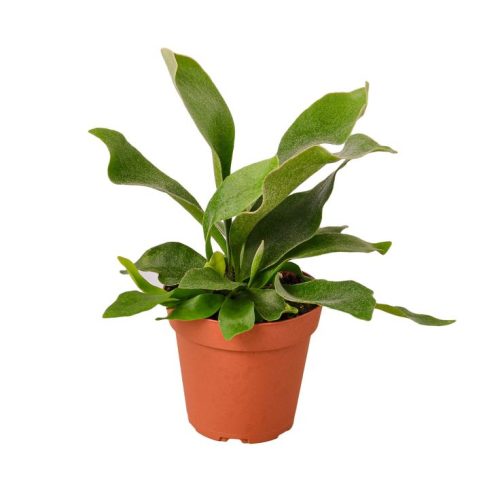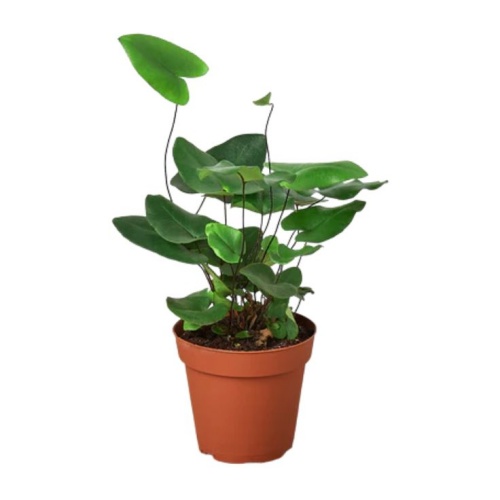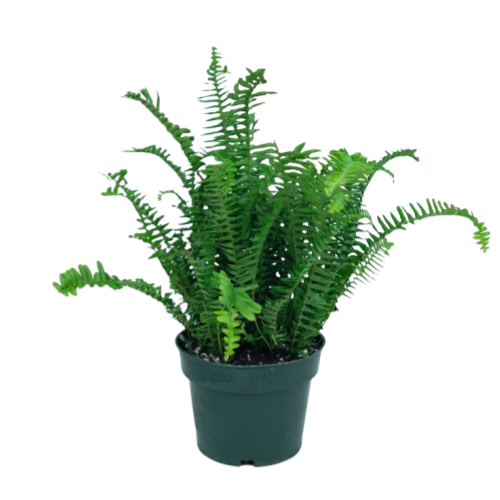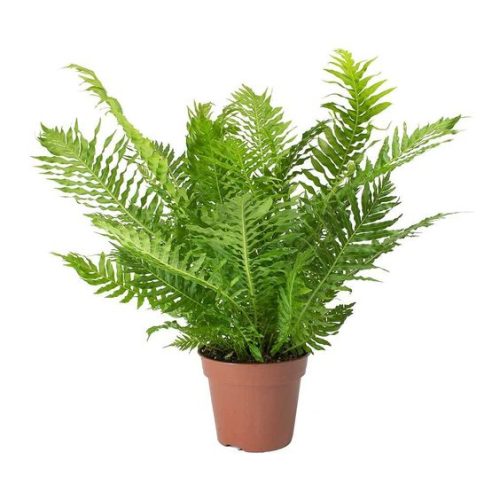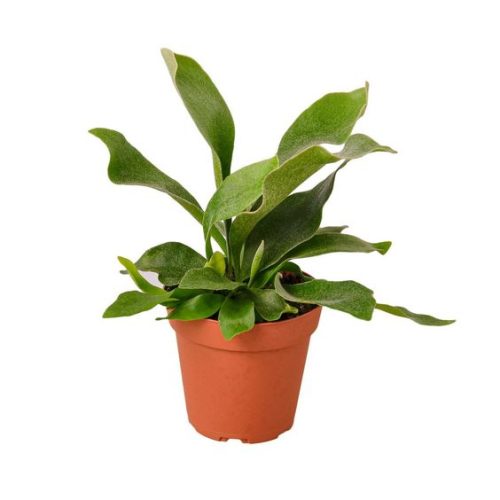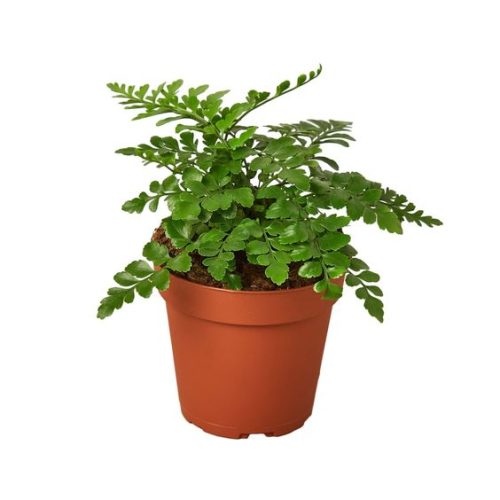Puru whetu puru
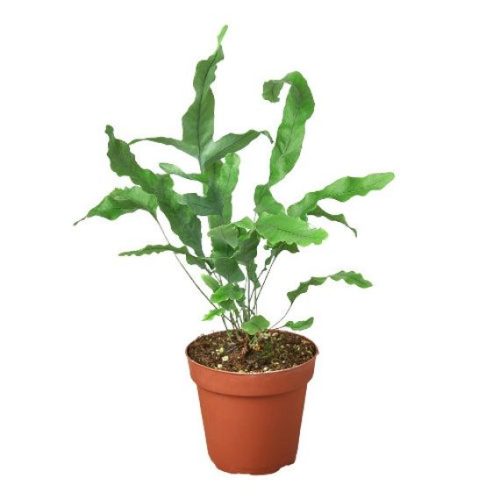
- Botanical Name: Phlebodium Aureum
- Family Name: Polypodiaceae
- Kakau: 1-3 Inches
- Te pāmahana: 5℃-28℃
- Other: Shade tolerant, warmth, not cold resistant, prefers humidity
Tirohanga whānui
Whakaahuatanga Hua
Royal Fern Dominion: The Blue Star’s Sublime Habitat
Te tirohanga kikorangi kikorangi
Te Puru whetu puru, mohiotia ana te pūtaiao hei waahanga o te whanau polypodiaceae me te mea no te puninga Phlebodium, e mohiotia ana e tona rau morphology ahurei. Ko ona piripiri ngawari he paninga me te puru puru pai, hoatu ki a raatau he kakano-hina. Maori ki nga ngahere ahu whenua o Amerika ki te Tonga, ka riro tenei otaota i nga taiao humarie, kaore i te tauraki-manawanui. Ka taea e ia te whakariterite ki nga tikanga maama iti engari he pai ake te maama o raro, he maama te marama.
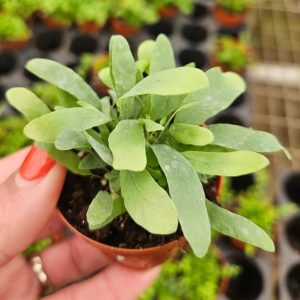
Puru whetu puru
Nga tikanga o te rama rama
The Blue Star Fern prefers to be placed near east or south-facing windows, where it can enjoy the soft morning sunlight followed by bright, diffused light for the remainder of the day. Direct strong light, such as midday sun during summer, can scorch the fronds, leading to curling, scorching, and yellowing. Conversely, insufficient light can result in slow growth, legginess, and reduced new leaf size and vibrancy. As seasonal light conditions change, it’s important to adjust the plant’s location to avoid harsh direct sunlight in summer while ensuring it receives ample light during winter months. Regularly rotating the plant ensures even growth as it basks in the light.
Manakohanga Whakapai
Ko tenei otaota e pai ana ki nga maroke mahana, kaore i te hukapapa-whakarei. He pai te tipu o te taiao e mau tonu ana i waenga i te 15-28 nga nekehanga Celsius. Mena ka heke iho te pāmahana, ka uru pea te tipu ki tetahi whenua tuuturu, ka taea e te maturuturu ki te maturuturu rau. Ki te pupuri i tana hauora tino pai me te tirohanga ataata, ka tūtohutia kia mau tonu i te puru whetu puru i roto i te takurua. Ko te pāmahana kia kaua e taka i raro iho i te 5 nga nekehanga Celsius, na te mea ka kaha te makariri ki te makariri ka kino te tipu o te tipu o roto. Ko te atawhai o roto i te takurua, ko te tipu kia tiakina mai i te hau ki te aukati i nga rereketanga o te pāmahana.
Te Hākū me te whakainu
Originating from the damp rainforests of South America, the Blue Star Fern favors moist conditions and is prone to drying out. During spring and summer, the soil should be kept lightly moist, while in autumn and winter, it is sufficient to water once the topsoil is completely dry. It’s crucial to use well-draining, breathable pots and soil to prevent waterlogging, which can lead to root rot. When watering, always check the soil’s moisture level with your finger or a tool before hydrating; never water on a whim. Ensure that the pot you use has good drainage and breathability, as some pots or saucers may not have drainage holes. In the heat of summer, regular misting of the leaves can be beneficial. The plant should be situated in a well-ventilated environment, as ventilation significantly affects the evaporation rate of soil moisture.
Pīpīwai
Ko te nuinga o nga Ferns e pai ake ana ki nga taiao makuku nui, engari ko te Blue Star Fern kaore i te tono. Ko nga taumata o te whare me te papa humarie te nuinga o te tipu. Mena he iti ake te 40% o te makuku o te maaka, ina koa i nga marama o te takurua, ka whakainu te tipu i nga rau hei utu mo te ngoikore o te makuku.
He awhina mo te whakanui i te haumākū
– Utilize a humidifier, taking care to mist around rather than directly on the leaves, lightly spraying the plant’s surroundings or above it.
– Group plants that prefer high humidity together to create a micro-humid zone.
– Create a DIY humidifier by placing a shallow tray with pebbles or another medium, filling it with water so that it covers half the medium, and placing the pot on top, ensuring the pot is not submerged in water. The natural evaporation will help maintain humidity.
Whitikatanga
The Blue Star Fern does not have a high demand for fertilizer. Moderate fertilization is sufficient. During the spring and summer growing seasons, apply a balanced, water-soluble fertilizer at half strength once a month. Fertilizing can be halted in winter when the plant’s growth slows down due to low temperatures, as fertilizing then could burn the roots.
Tohutohu whakahoahoa
– If the plant is in the right environment and shows significant leaf growth, supplemental fertilizer can be beneficial.
– If you’ve used fresh soil with added base fertilizer, no additional fertilization is needed.
– Remember, more is not always better; over-fertilizing can harm the root system due to fertilizer buildup.
Whakahurihuringa hau
Ko te ngoikore o te tiaki tipu o roto, ka kaha te arahi ki nga pepeke penei i nga kaimori pungawerewere me nga pepeke tauine. Ko te pai o te whakaohooho e tere ana i te whakahekenga o te makuku. Ko te whakamatautau i whakaatu ko te tipu tipu ka neke atu i te wiki ka tino maroke i runga i te taiao o waho, engari 3 ki te whakaatu i te rereketanga o nga waa whakamaroke o te whenua.
He tohutohu tohutohu
– Without proper ventilation, moisture evaporates slowly, leading to overly wet soil for extended periods, which can cause pests and diseases, and even root rot.
– A small fan can aid in plant ventilation; be mindful not to place it in a direct draft from windows during winter.
– If you cannot guarantee sufficient ventilation, consider reducing watering and placing the plant in a brighter environment. Adjusting the potting mix and choosing more breathable pots can also help.





